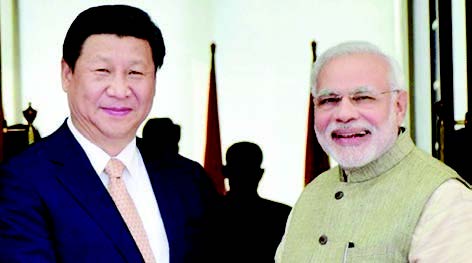
The re-election of President Barack Obama is likely to be more promising and fruitful for the growing strategic partnership between India and the United States. During the second Obama administration, his India policies are expected to be upgraded further and there would possibly be more tangible outcomes from policy pronouncements made in the last four years.
This strategic partnership is based on a foundation of shared values and interests. But due to the different state of their domestic constituencies and regional strategic environments, there could be differences in their understanding and responses on a few issues. That is why it is essential for leaders and policymakers in New Delhi and Washington to develop a deeper understanding of existing ground realities for negotiations on various issues.
It is evident that India and the United States have been making a move forward. There have been issues in recent times such as defense procurements in India, the Libyan crisis, nuclear liability, outsourcing, allowing FDI in retail sector in India, Iranian nuclear program, Syrian crisis, etc.where India and the U.S. appear to have realized the other’s positions well. This has helped them successfully reduce friction and develop a mutual understanding – which is expected to improve further during Obama’s second term.
The strategic partnership saw an upward trajectory during the first Obama administration with deepening cooperation in all sectors. It may be suggested here that after Obama’s reelection, there is a need to expedite the implementation process of policy pronouncements made by both New Delhi and Washington in the last four years. This will lead to more concrete outcomes. During the final phase of its first term, the Obama administration announced the re-balancing of its policy towards the Asia-Pacific, recognizing it as “the most rapidly growing and dynamic region in the world”. It appears that the U.S. has realized the need for enhancing its presence in the region so that it can secure its interests and influence.
As China enhances its economic and military capabilities and becomes more assertive vis-à-vis its neighbors, it is likely that the second Obama administration would be seeking more cooperation with its allies and partners to successfully implement its rebalancing strategy. Also, with this rebalancing, it appears to be assuring its allies and partners in the Asia- Pacific region that it will be working with them to ensure peace and stability. India needs to deeply consider this evolving U.S. policy in the region and should prepare its response to successfully deal with emerging scenarios.
This rebalancing is also about internal balancing. It is likely that the second Obama administration will be working more closely on domestic issues in the United States so that it can enhance its economic growth as well as national capabilities in sectors such as education, health and energy. This is imperative for the U.S. to deal with any future challenges such as the rise of China.
India also needs to resolve its internal challenges and strengthen its national capabilities. It is essential to expedite these nation-building processes so that the growth momentum can be upgraded which will lead to a secure and prosperous future for India. During the second Obama administration, India and the United States – the world’s two largest democracies – should also collaborate more closely in their national capability building processes.





Be the first to comment